DIY Floor Refinishing
While I don’t feel qualified to provide a tutorial for wood floor refinishing, I am happy to share my experience and knowledge that I learned through the process. All wood floors are different, and can be refinished in many different ways. Here is how I refinished my pre-finished red oak wood floors – my DIY Floor Refinishing.
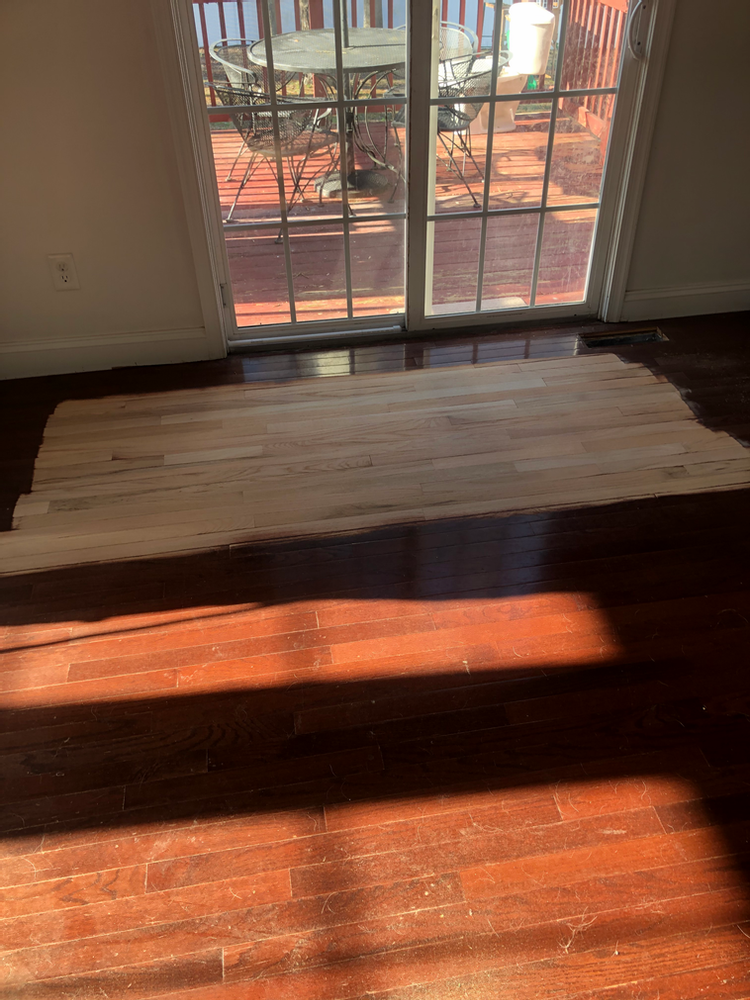
Let me start by sharing what we went through before I began. Our red oak floors had a dark red stain on them. I was DYING for light and airy floors with a white oak look. I hired a floor refinishing company because I was nervous to take on this project myself after months of research. While I knew the look that I so badly wanted, I was not sure that it was possible. I was prepared to go with a medium toned wood stain after hiring the company that we worked with.
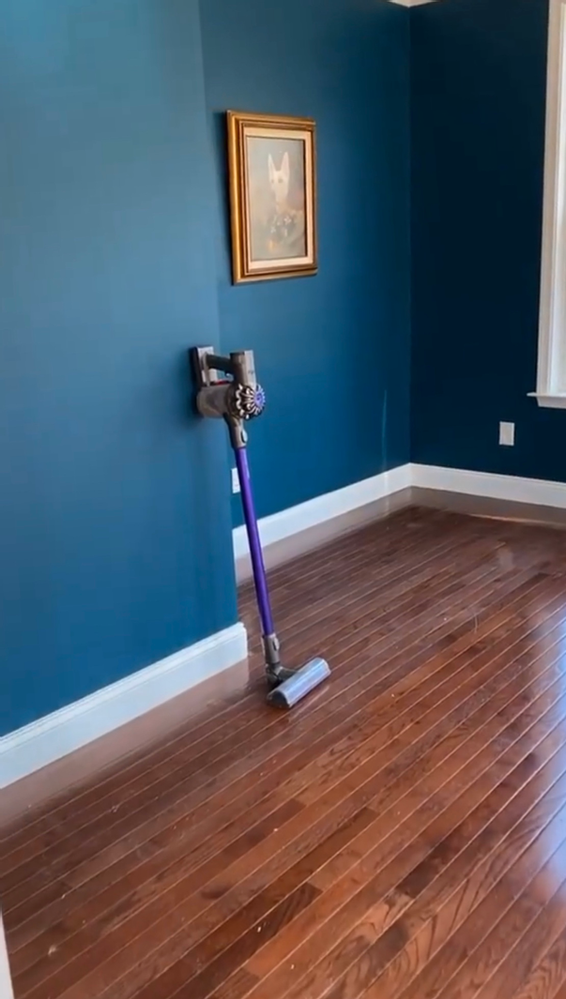
We prepared our house by removing all of the furniture and decor and storing it in preparation for the refinishing to begin. We removed the shoe molding and numbered them. I made a sketch of each room as I went and wrote the number on each sketch as I went so that I was able to replace the molding after painting them when the floors were complete. We packed up our belongings and moved into our basement for the project to begin!
PREP
Here is a list of things that you should do in preparation:
-Remove all artwork/furniture/decor/appliances
-Remove shoe molding
-Cover AC vents and returns
-Turn OFF A/C
-Cover countertops
-Block off any open doorways leading to another area of your home not being refinished
-Remove bottom shelves in closets if they are close to the floor
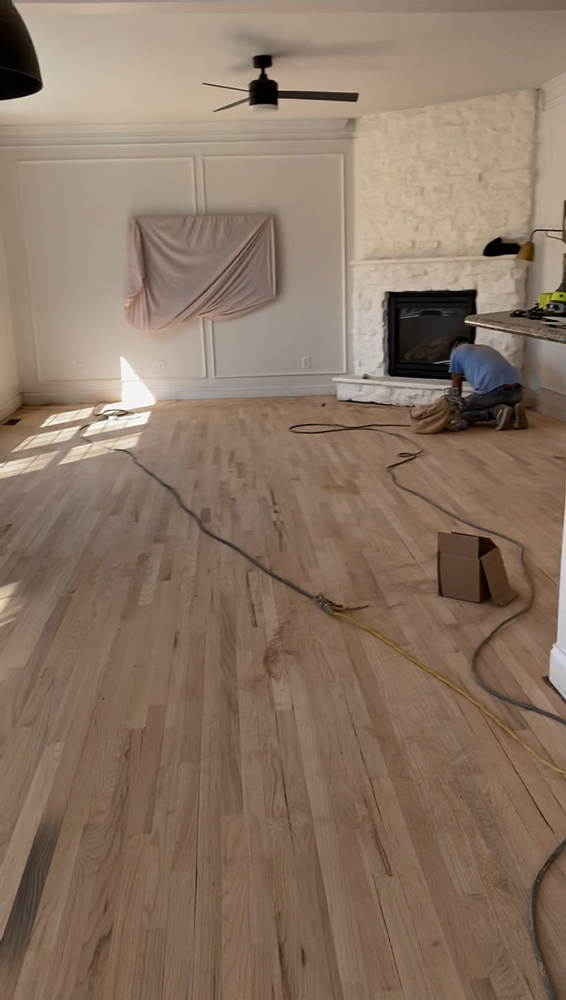
CHOOSING STAIN
Once our floor refinishers sanded down the floors, they allowed me to test some stain and pick. We discovered that our pre-finished red oak floors had white oak feathered into them. This made for a lot of variation in our floors. I tested these two stains on the floors, and ended up choosing the lighter (Rustic Beige by Duraseal) stain. Once it was applied to the entire floor, I realized that I was not happy. Keep in mind that it is difficult to tell what stain looks like when tested on a small area, especially if you have more than one type of wood!
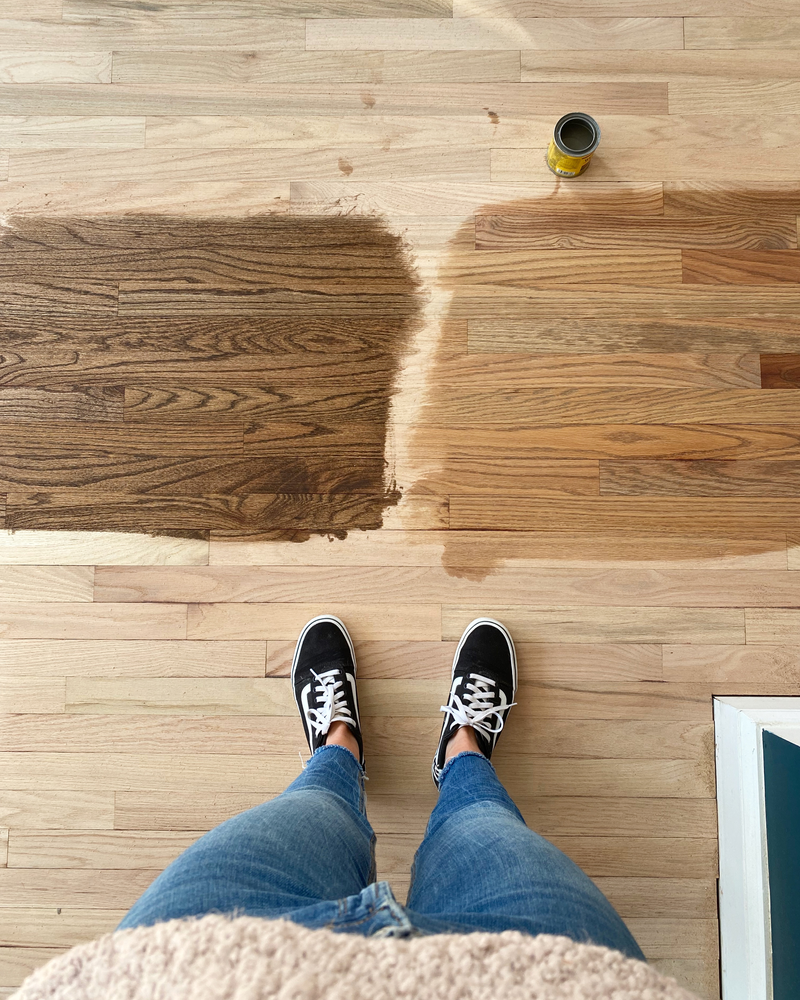
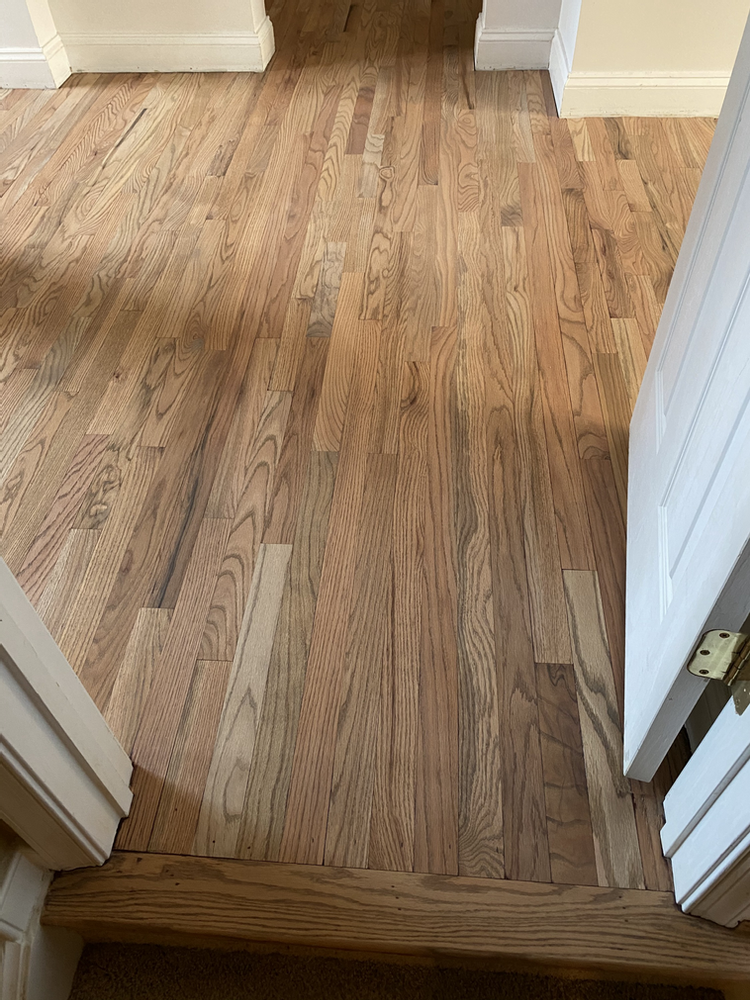
After much frustration, I decided that I wanted the floors to be sanded down so that we could start over. I was regretful of not going lighter, and I was determined to stick to that. The company was not willing to start over without charging for it, which was out of my budget. I decided to take on the project myself.
Here are some things that I learned from this situation:
-I should have KNOWN what I wanted before beginning and stuck to that going into it
-I should have done more research
REFINISHING
Here is where I started. Wood floors with a coat of light stain on them. This process would have been MUCH different if I were to have started from the beginning. Pre-finished wood floors has several STRONG layers on them. This takes a heavy duty machine to take off. But since I was only dealing with one coat of stain and no finish, I was able to use a medium duty sander to get the job done.
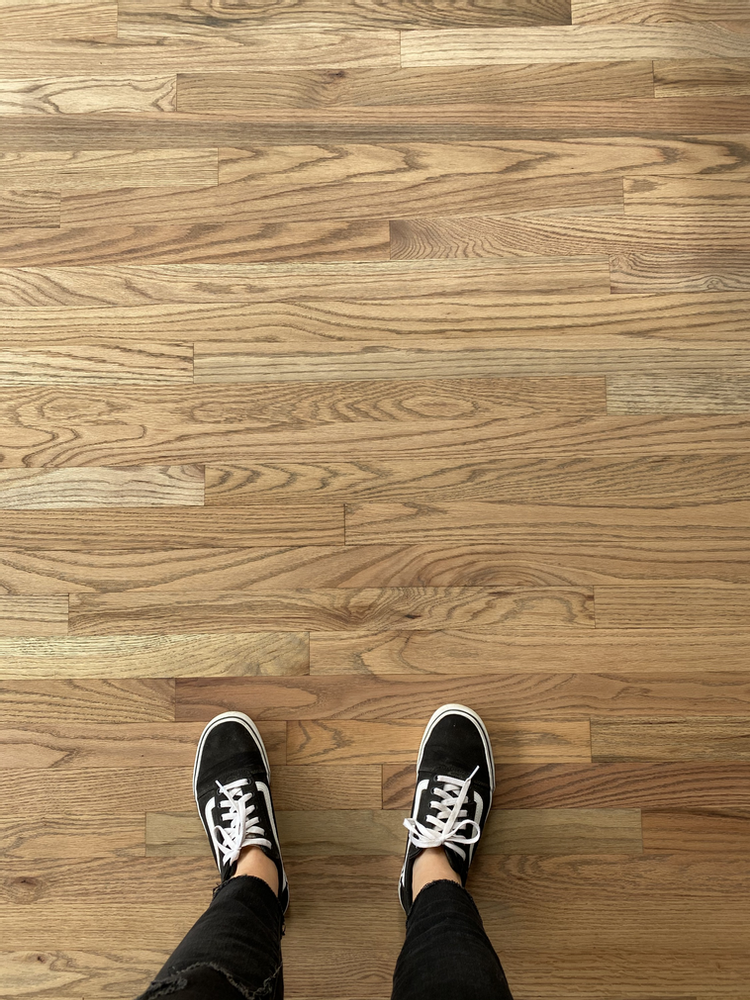
Here is what I rented:
-Sandpaper & Pads (80 grit/120 grit) from the tool rental department @Home Depot
Here is what I additionally used:
–Rags
**When sanding down your floors using any machine, you MUST be cautious. You can very easily cause dips/uneven areas on your wood. A sander must never sit in one spot while it is turned on. It must constantly be moving, in a pattern, to keep your floors level and smooth. The sander that I used was based off of the fact that I was ONLY sanding a layer of stain down. The tools you might need for your own refinishing project will vary depending on YOUR floors.
If you aren’t sure whether or not your floors are pre-finished, look closely at the surface and determine if the edge of each piece curves down slightly toward the crack (is beveled). If so, they are more than likely pre-finished. This is very common in homes build after 1940.
It is recommended to use a Belt/Drum sander (this is not what I used) when sanding down FINISHED floors. This is a tool that I am not familiar with, and also functions very differently from the orbital sander that I used. It is heavy duty and more powerful. It also is only supposed to be moved with the wood grain, unlike the orbital sander which can be moved in any direction.
SANDING
My house had already been prepared for sanding (show molding and furniture/appliances removed), so at this point I was ready to begin. I purchased sandpaper and and this red pad thingy along with my orbital sander rental based off of the suggestions from the tool rental employee. I was only sanding one single layer of stain, so I used 80 grit and 120 grit. It is very important to sand floors with plenty of ventilation and protection (mask).
*IMPORTANT NOTE
I HIGHLY suggest doing research before attempting to sand down floors. There is a technique to it for a smooth finish. Watching youtube tutorials was extremely helpful for me. It is absolutely worth taking the extra time to prepare yourself as much as possible for this step!
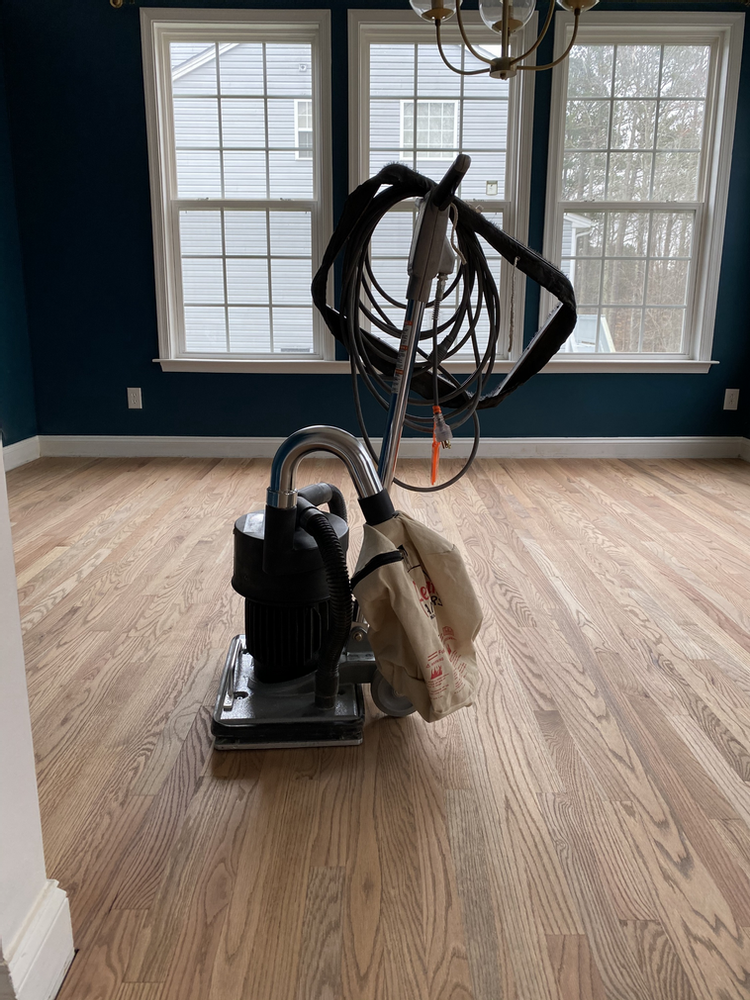
I began with the 80 grit sandpaper, moving in a steady motion across my dining room, making sure to not stop in ANY spot. This sander is able to sand in any direction because it moves in an orbital motion which made this whole process pretty easy! If I were sanding from finished floors, I would have rented a Deck/Belt sander and used a heavier grit and only in motion WITH the grain. This is the Orbital Sander (medium duty) that I rented. It was pretty easy to move it around. I think that this sander COULD work for sanding down completely finished floors, if you were to use a lower grit (60 grit). Asking a professional is a great way to find out! Home Depot and Lowes have employees at the tool rental department that are very knowledgable.
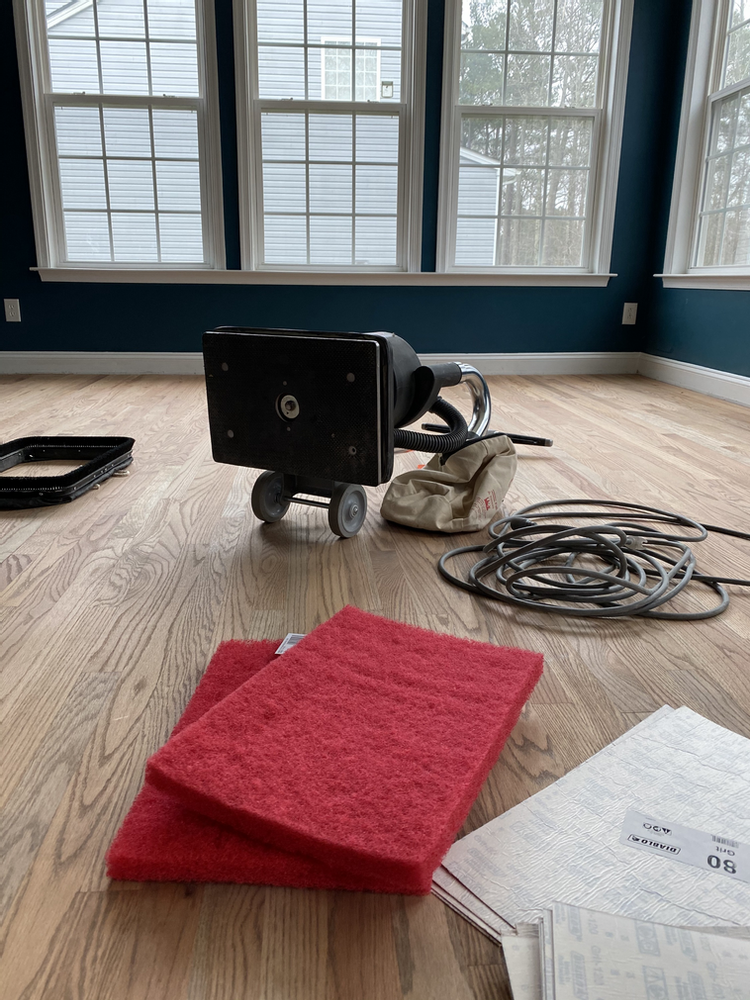
After passing over the floors once (I changed the sandpaper about three times when it began to wear down), I made another trip around with 120 grit sandpaper. This smoothed the wood a little more.
Bleed back
I noticed some bleed back after this. Bleed back is when the oils from a previous stain that were deeply penetrated into the wood grain, start to resurface. After trying multiple techniques (baking soda, cloths, mineral spirits) I found that letting the oils fully surface overnight (or even longer) was the best option. After the oils completely surfaced, I sanded again with 120 grit!
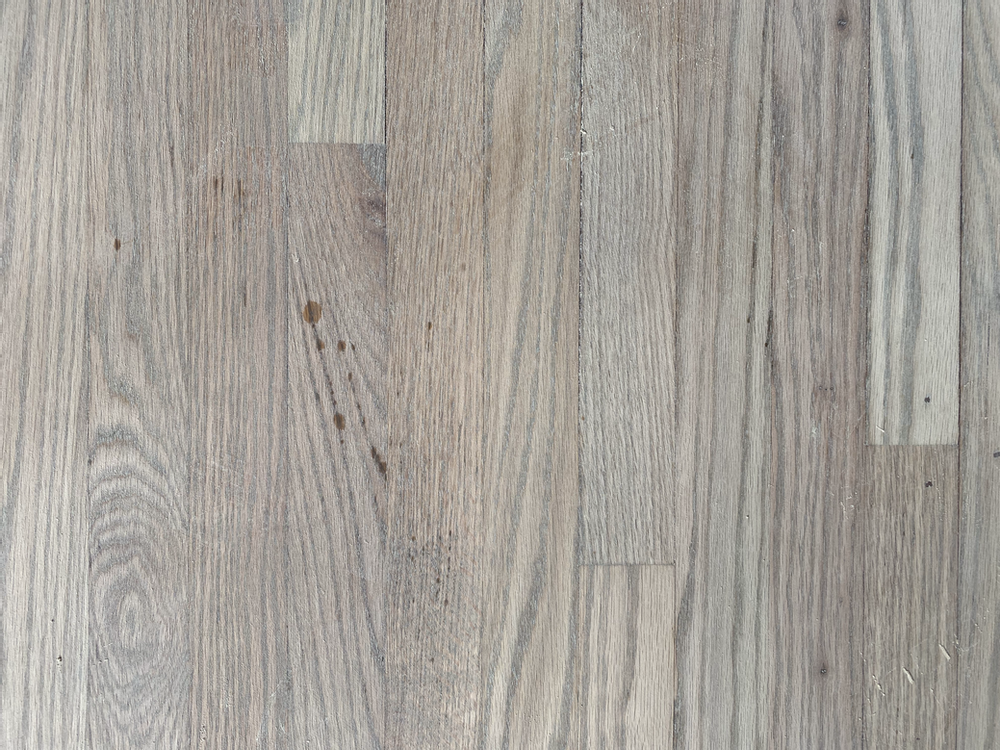
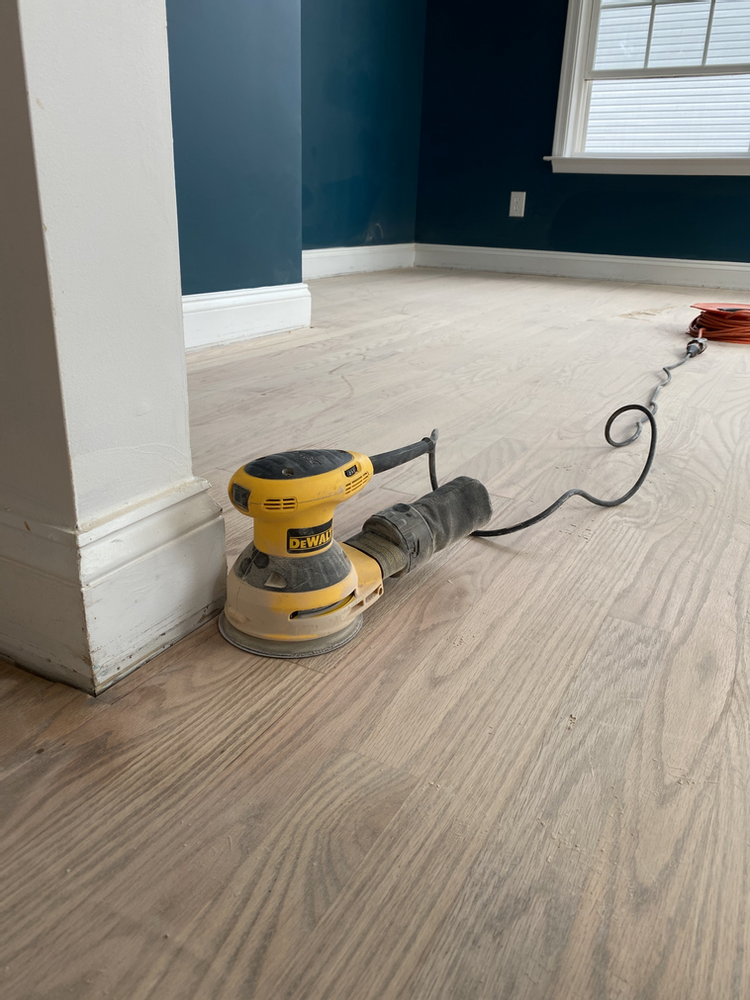
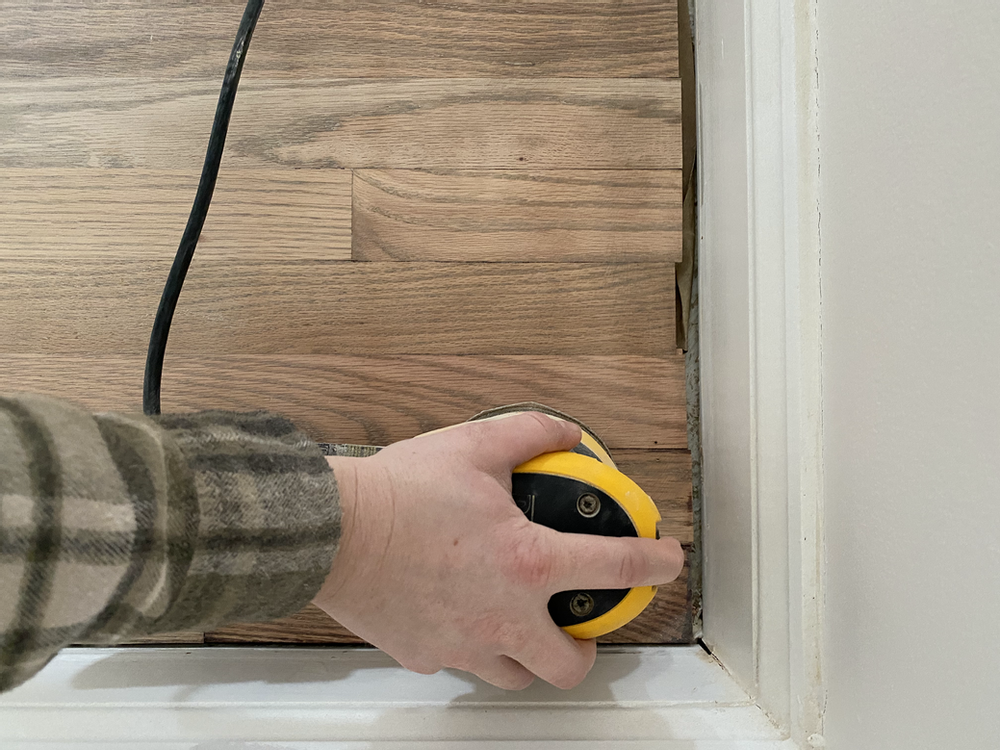
I then sanded around the edges using my Dad’s hand orbital sander. Most tutorials will suggest renting an edger from the tool rental department. This is also a great option. However, it is more powerful and difficult to control than an orbital hand sander. These are also really affordable and can be used on numerous projects, so it seems worth it to me to purchase one for this project! Rather than paying for a rental that you would only use once.
I used 80 grit and 120 grit as well for this, making sure again that the sander is not held in one spot for too longer and constantly in a pattern. The wood tone needed to be exactly the same as the rest of my floors so I’m making sure of that. I also went around smaller/hard to reach areas with my mouse sander!
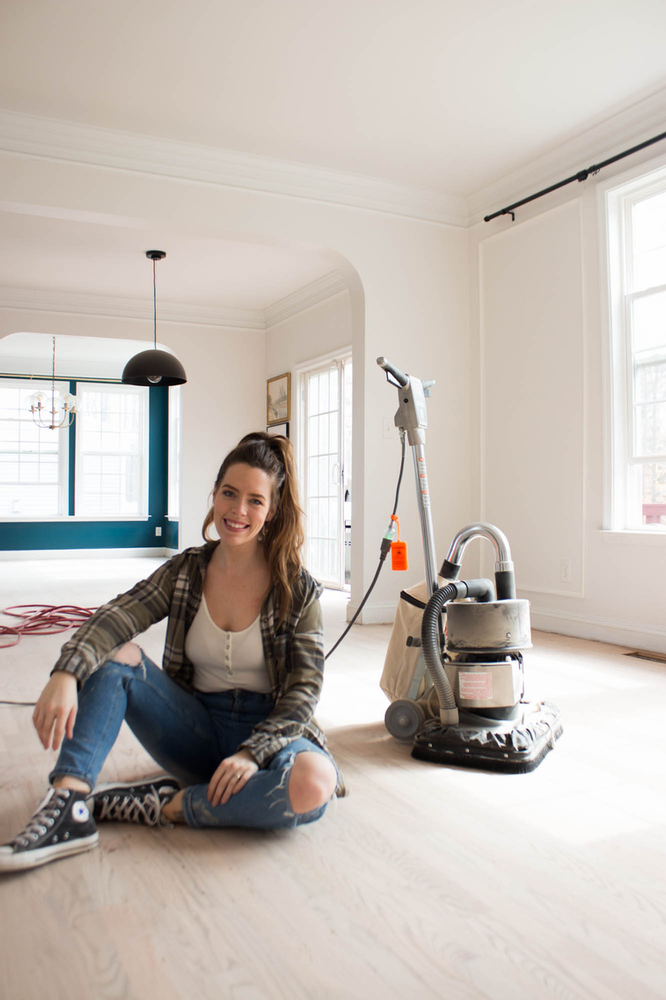
PREP (again!)
Once the floors were completely sanded, It was time to clean them in preparation for stain! I first used a shop vac (it will clog your filter if you use your regular vacuum). After vacuuming up most of the dust, I used a DAMP rag to absorb more. I then went back and used mineral spirits to remove any oils and left over dust. I did this by soaking some old cloths with mineral spirits and squeezing them out until the cloths were damp (making sure to wear gloves and a mask). It is very important to make sure that the surface of your floors are completely clean!
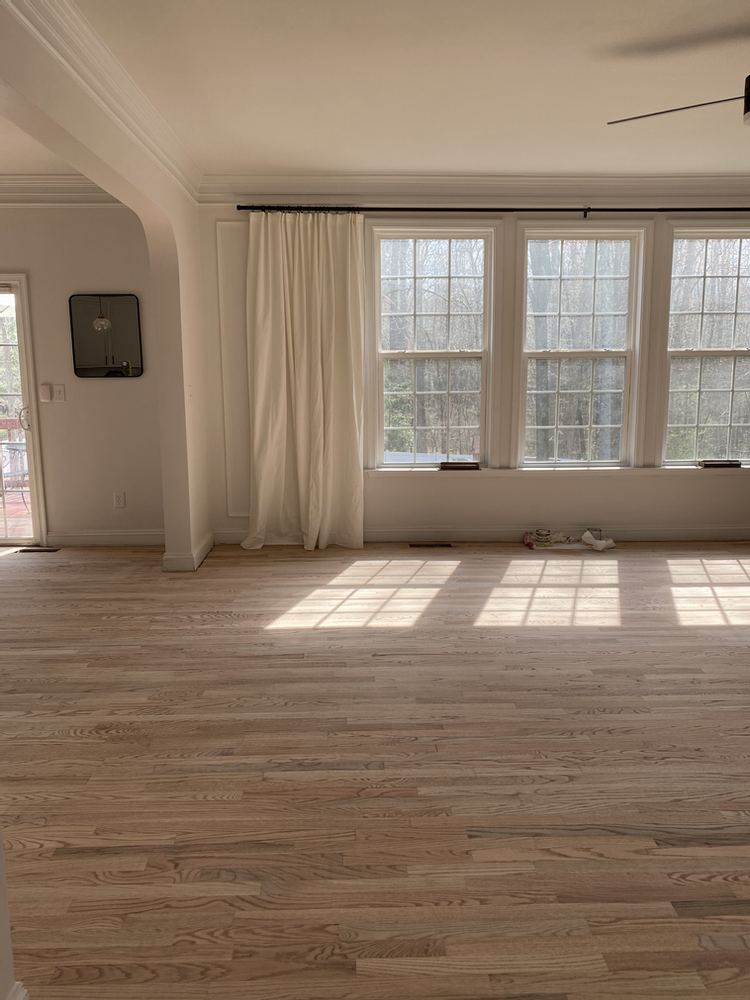
STAINING
After testing various stains on my floors, I decided to use Varathane Antique White Stain. It went on the most smoothly out of the stains that I tested, and was the most warm white that I could find compared to the others! I purchased 4 quarts for my 900 sq. ft. floors. Because I wanted to mute down the red tones in my floors as much as possible, I also decided to add in a tiny bit of green stain to my Antique White stain. I did this by going to Home Depot and purchasing this tintable stain. I had them tint it to “Calm Spring” green (there are only a few colors to choose from).
When this was done, I added two teaspoons to each quart of my white stain and stirred very well. I would recommend having Home Depot add it into your stain for you if you decide to go this route. They can mix it in at the paint counter!
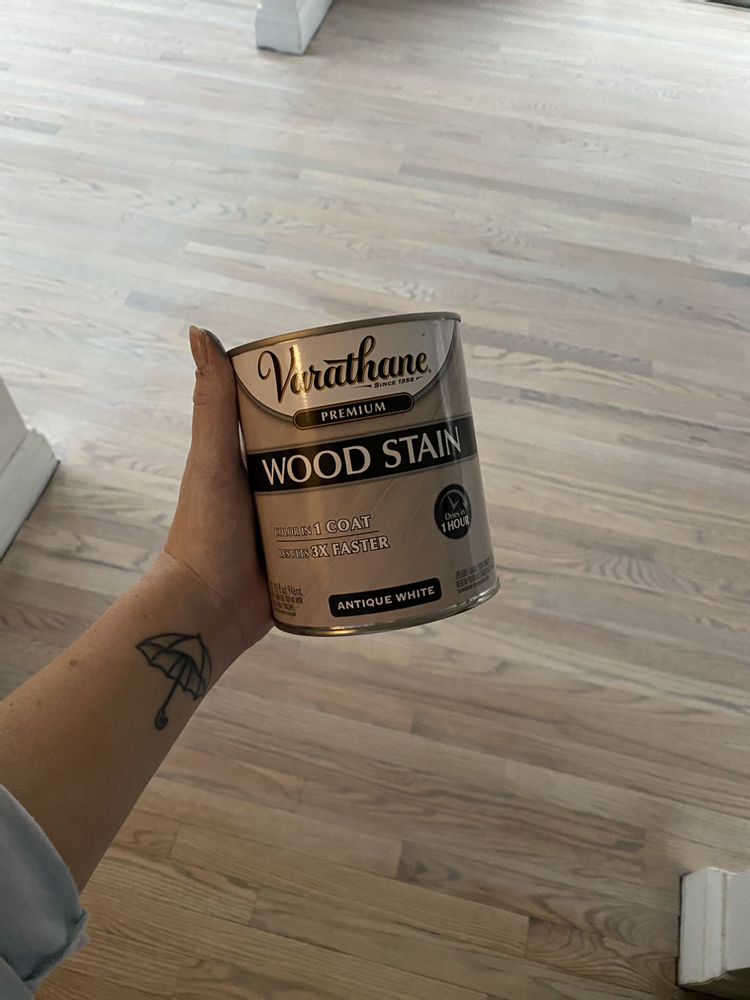
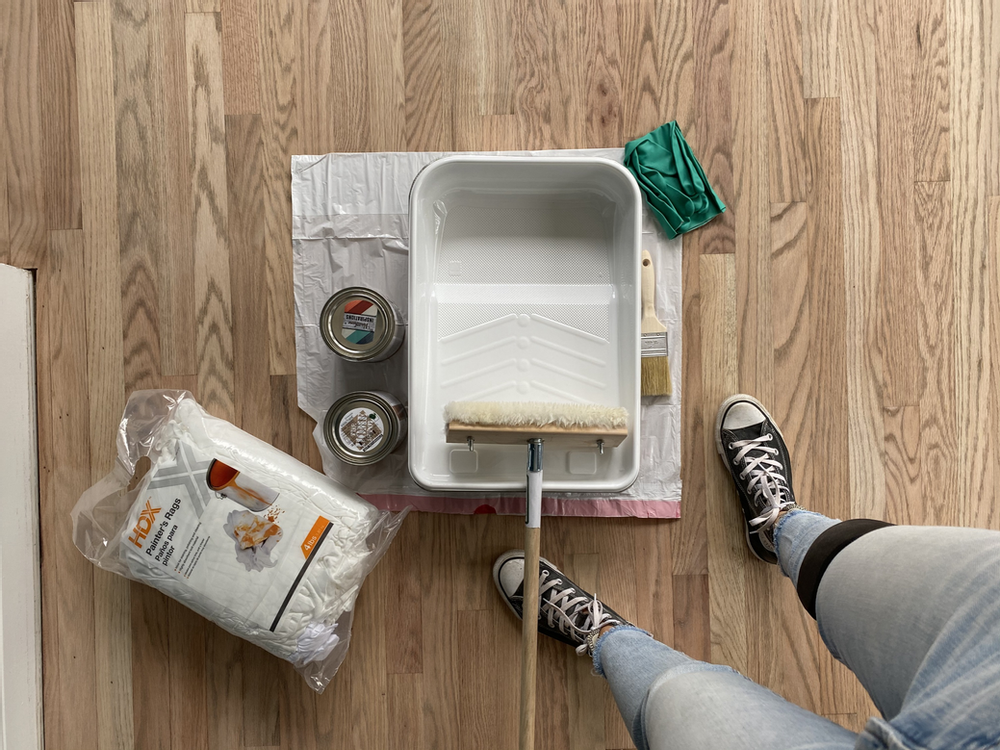
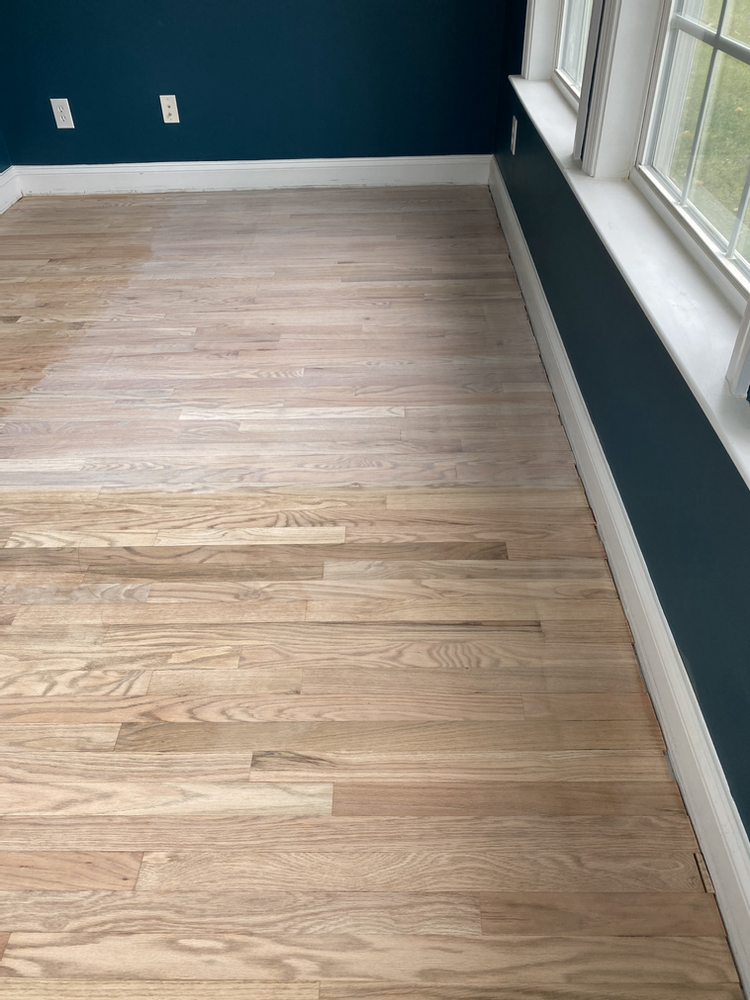
Staining Supplies:
–Stain (I used 4 quarts for 900 sq ft.)
–Green Stain (cool springs, 1 quart)
–Tray
–Rags
–Mask
–Knee pads (not necessary but super helpful)
*a note about application
Because white stain can easily overlap on wood floors (typically not an issue with other stains), I would recommend applying with the grain of your wood in long strips, NOT stoping until you reach the end of your section. If you have an area of your home that is long (like from my dining room into my living room) I would suggest working with at least one other person so that you can apply and wipe the stain in the same amount of time that you are the rest of your floors. I made the mistake of applying it across my floors in wide sections against the grain at first, and had to correct stain overlap.
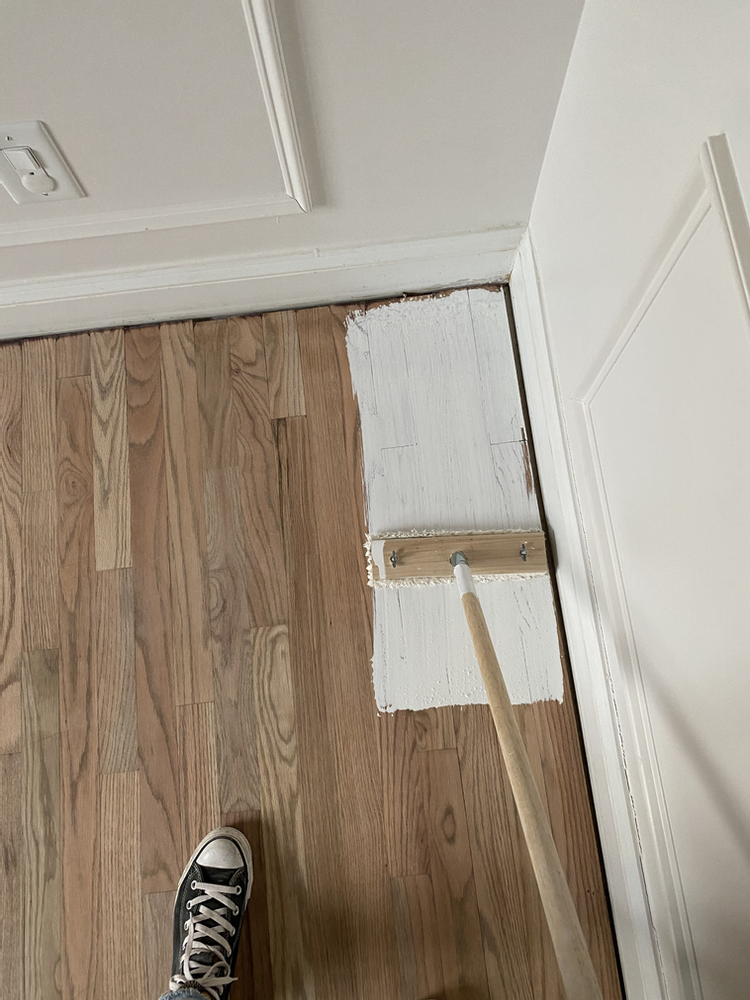
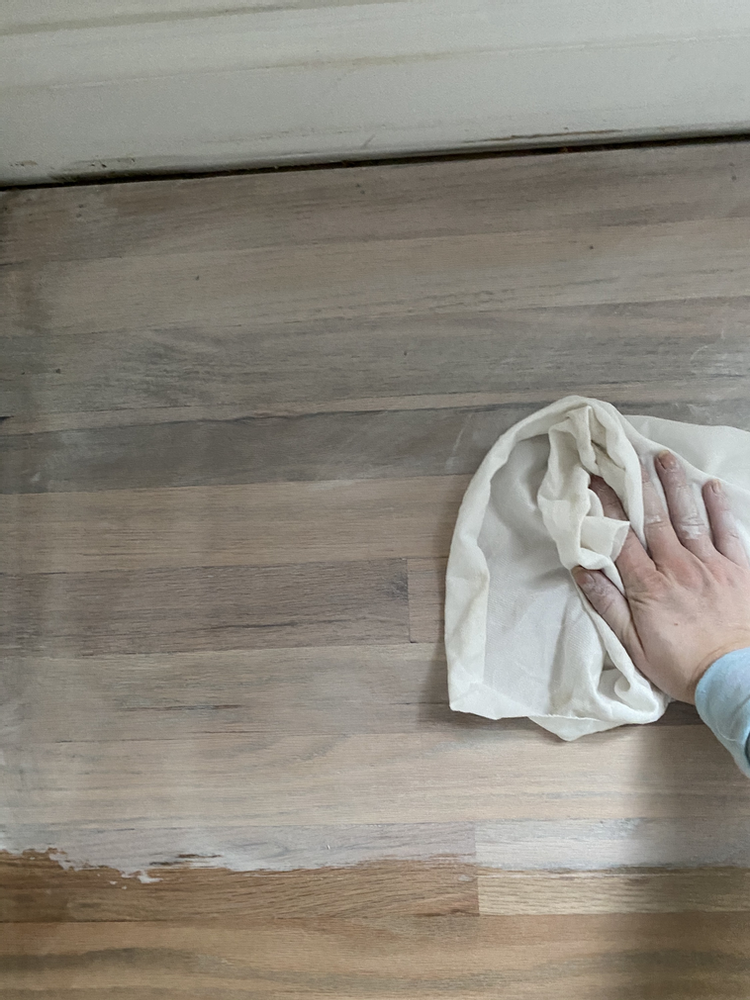
My technique for applying the stain involved dipping the applicator in stain and brushing it onto the wood in my section. Once I figured out the correct technique I would work with about four-five planks width and apply all the way down to the wall. After applying I would almost immediately go back and begin to wipe it off. The first wipe will get most of the stain up (having a LOT of rags is necessary). I then would immediately go back and buff it all with a clean rag to smooth out any smudging. It is important to make sure that the stain sits on your floors for the same amount of time for every part of application. I also made sure to work in a way that I backed myself out of the front door. The stain can not be walked on until it is completely dry!
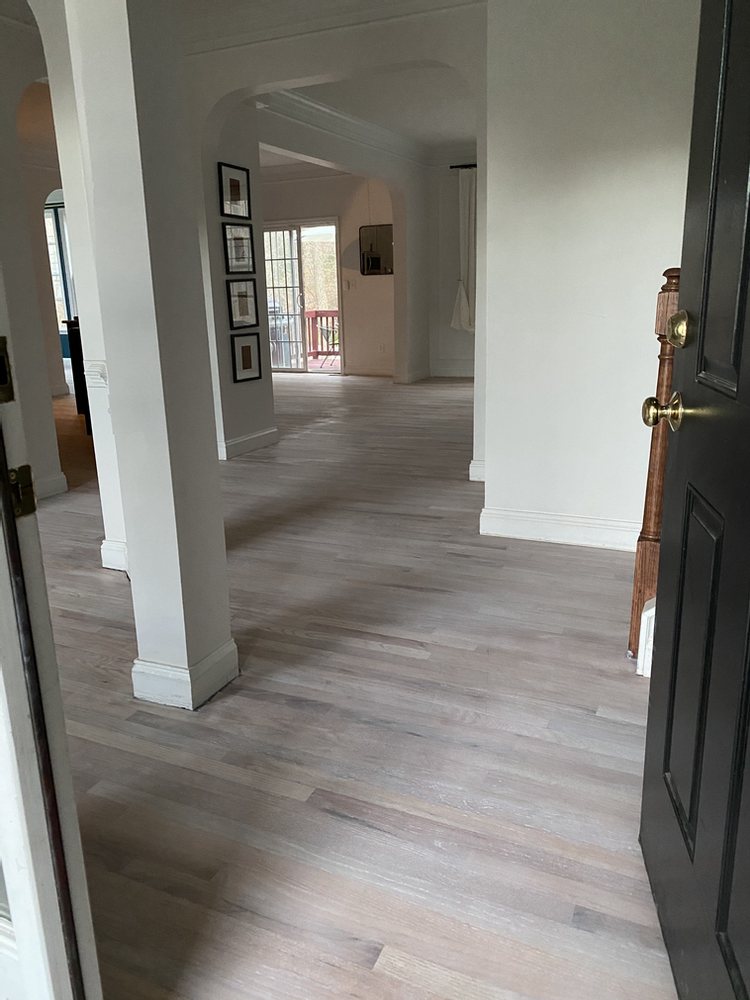
Once this was complete, I allowed the stain to dry for 24 hours. I had to correct some overlapping due to applying it incorrectly in the beginning. I did this by using my mouse sander with a high grit (I would recommend just using a 220 grit sanding block/paper) and just VERY lightly go over the overlapping so make it less visible.
FINISH
After much research, I decided to go with a water based polyurethane finish. This is the only way to go if you do not want your floors to yellow once it is applied. There have been many advancements in these finishes over time, and some are very durable! I was hesitant at first because I had “heard” that water based is not as durable, but it really just depends on which one you use! I chose this High Traffic Formula in Matte by Varathane, based off the great reviews and recommendations that I received!
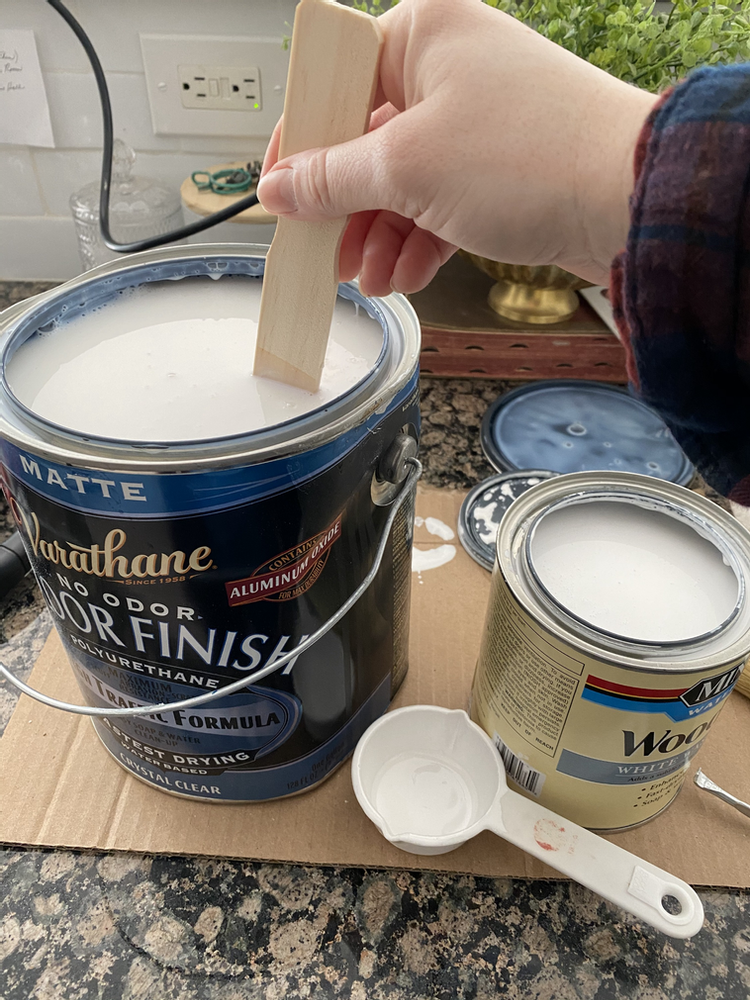
Here are the supplies that I used for the finish application:
–Polyurethane (I used about 6 gallons for 900 sq. ft.)
–Applicators (I purchased 1 for each coat)
–Handle (I reused the same one that I used for staining)
–Tray (also reused)
–Pickling stain (totally optional!)
STAIN
I chose to mix in some pickling stain into my polyurethane. I had seen some great results from others that had done the same to their floors (with or without stain under). This allows for the poly help tone down some of the wood variation that I had going on! It is water based like my polyurethane – that’s why I chose it. I would not recommend mixing an oil based stain (like the Varathane antique white) in with water based poly. I mixed 1/4 cup into each gallon of my poly before applying (making sure to stir VERY well), with the exception of my last coat. This was just plain poly with no stain added! The floors looked perfect at this point and didn’t need any more white added to them.
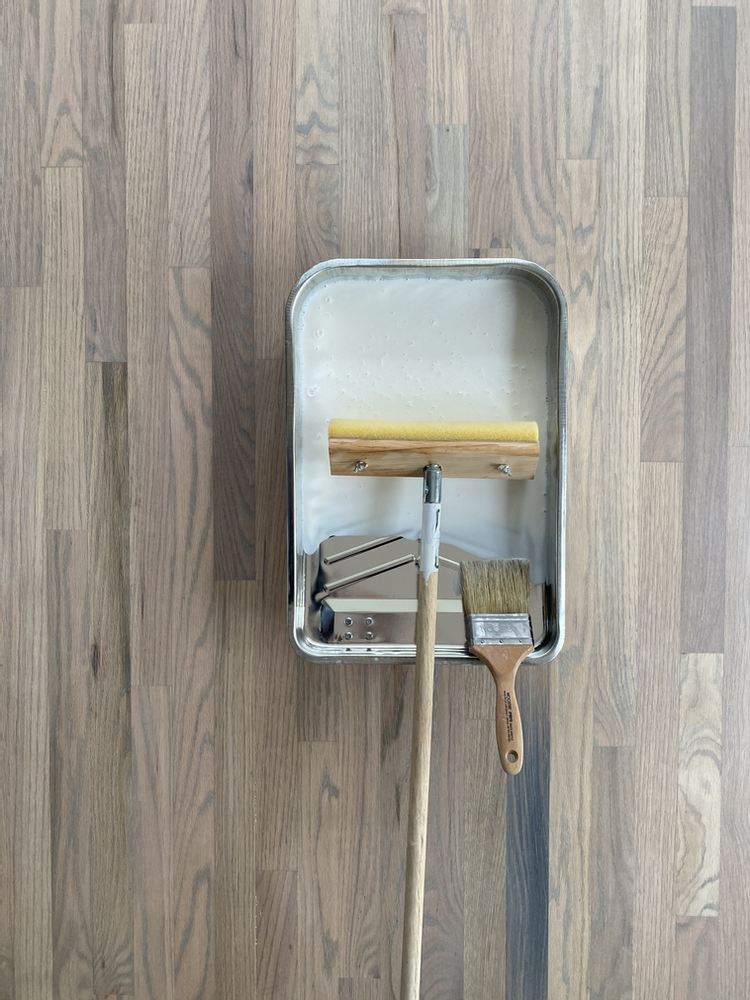
How to apply stain:
The applicators that I used required to be wet with water before applying the poly. I wet my applicator and got to work! I applied in the same direction and pattern as I applied the stain. Long strips, about five-six boards wide this time and all the way across the floor until reaching the wall, applying WITH the grain. Going with the grain of the wood may not seem that important for this step, but it totally is! If not, you will have lines in your poly after it dries (grain raise).
The application for this is pretty simple, and just took some practice. I would first dip my applicator and spread it out onto my section (sometimes dipping two-three times on a long section). I would then go back and use the applicator to smooth it out and remove bubbles. It sometime required me to sort of “feather out” the edges by gently releasing pressure and pulling up the applicator. I also made sure to back myself out of the front door. I also used a brush to get is tight areas that my applicator could not reach.
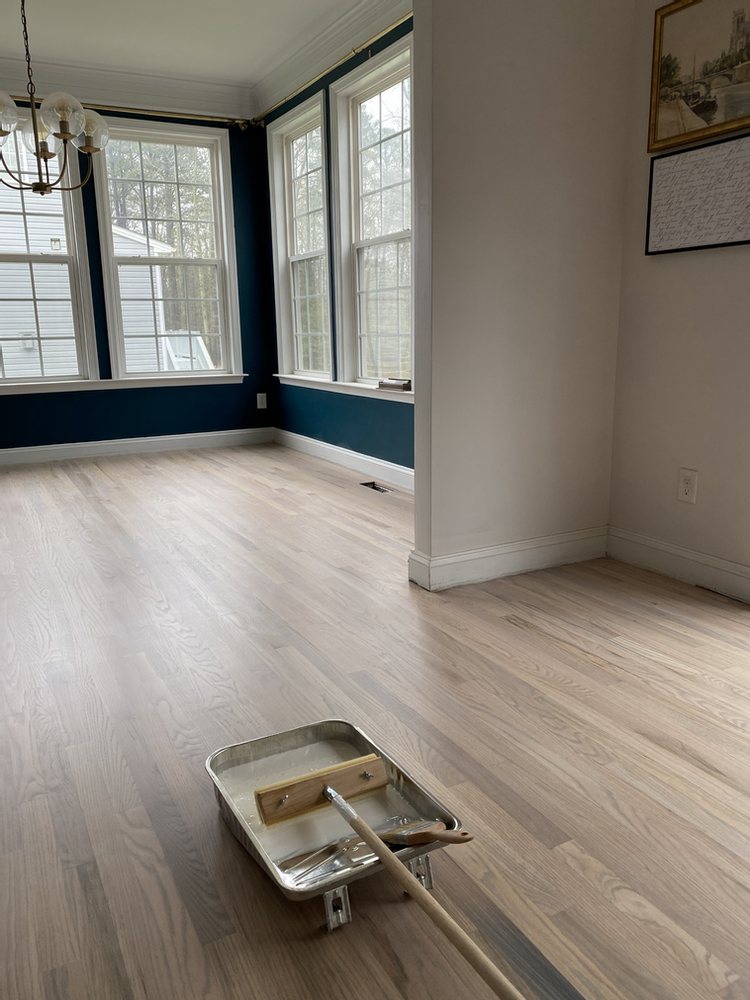
*make sure to give each coat ample time to dry!
Each coat of poly took only a few hours to dry before a new application is applied. I waited at least 4 hours between my coats and used these show covers to protect the floors while applying the rest of the coats. It is recommended to apply at least 4 coats of this polyurethane (I actually wish that I would have applied 5 coats just for extra durability). I used about 6 gallons of the poly for my 900 sq. ft. Hindsight, I probably applied a little thin. I bought 8 gallons based off the website’s recommendation. Make sure to keep this in mind! This will probably affect the long-time durability of my floors.
It is sometimes necessary to buff floors before the last coat of poly is applied. I did not do this, and they turned out just fine. However, that doesn’t necessarily mean that I did the right thing. My situation was a little different (COVID-19 happened right in the middle of this project which offered some limitations. There are a few small areas on my floors where I have noticed some grain raise. Buffing would have fixed this.
CURING
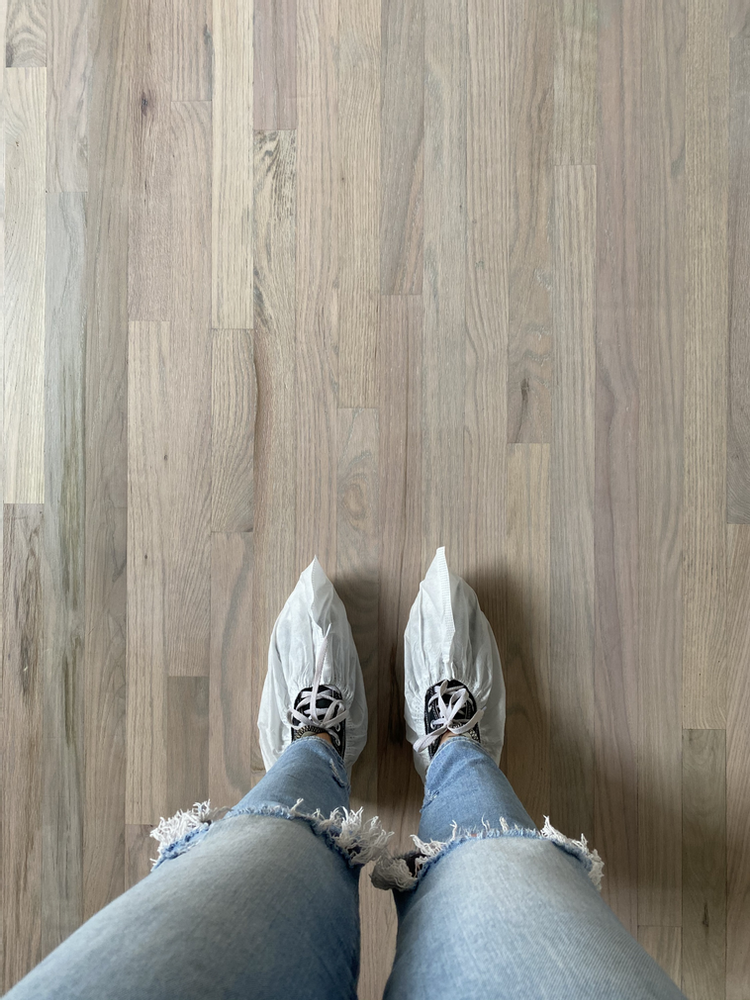
After applying the final coat (no poly added to this one), I allowed it to fully cure. This takes at least three days. However, the longer the better! I was so anxious to get back into our house that I started moving furniture back in at the HOUR the floors were ready. And I regret that. The curing still happens after those three days. It does not hurt to wait a little longer for extra curing to happen!
SHOE MOULDING
After the floors were completely cured, I replaced our shoe moulding (PS this is a great opportunity to give your baseboards a fresh coat of paint!) and moved our furniture back in, with the exception of rugs. I had to wait at least a week to put those back down.
This whole experience was challenging. But it taught me so many things! I wish that I wouldn’t have doubted myself in the beginning. They aren’t perfect, but they are great and I DID IT! And for a whopping $500 (not including the hiring of professionals). And I AM SO HAPPY with how they turned out!
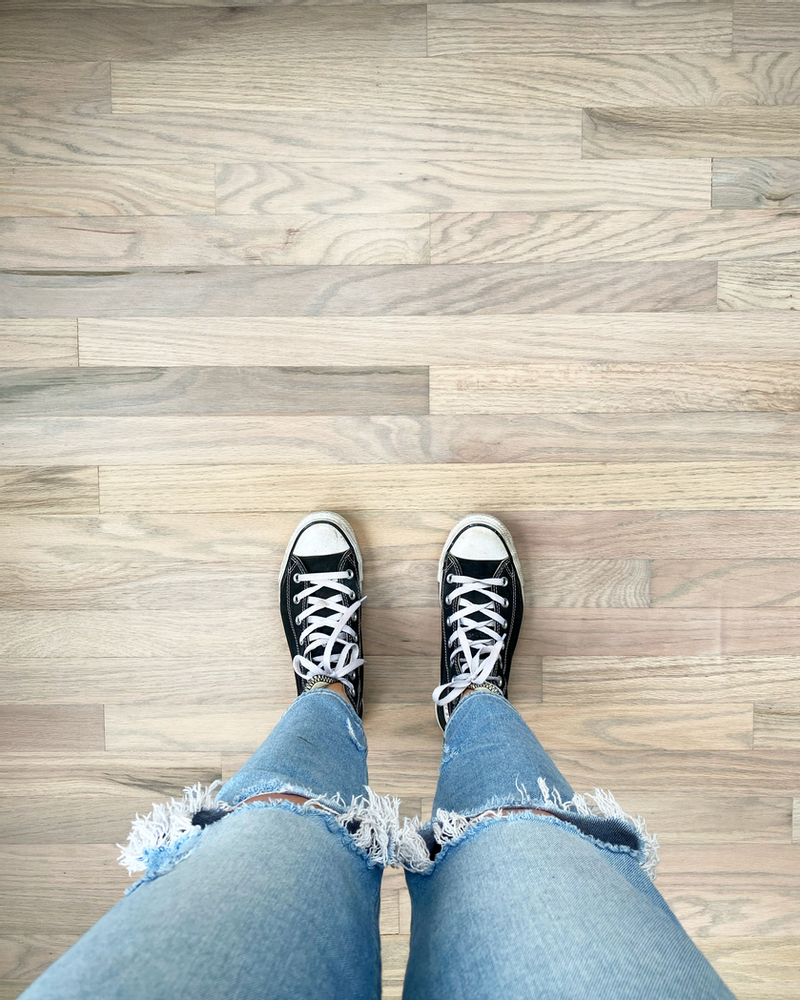
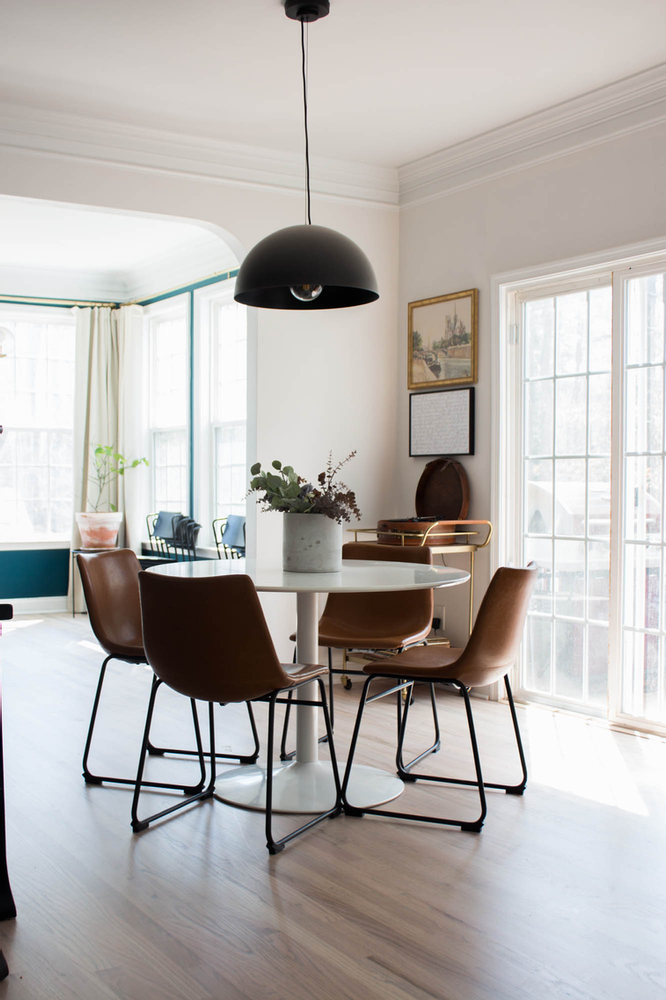
Here’s everything I used for my DIY Floor Refinishing:

















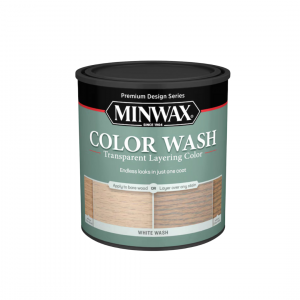

So pretty. What was the other color you were initially choosing between? In the 5th photo down?
Thank you! It was special walnut.
Hey! When applying the stain and the poly, you mention you do about 5 boards across and “tall the way to the wall”. How long is that?
And when you mention what you did to prevent overlapping, do you mean work from baseboard with the grain to get an even coat along the grain? what about the next “column” next to it, how would you prevent overlapping there? Thanks so much for writing up this project!!! My MIL is redoing her floors and found the same aesthetic issue of contrasting oak boards.
Can you recommend me which one is baby friendly?
I just mixed into a condo with vinyl plank floors and not sure how to wash them. I was told to use Bona floor cleaner, and do not need to rinse after washing. This does not make any sense to me. Any suggestions?
This DIY project looks so easy and great for me. I will definitely try it out on my maple wood flooring. I think refinishing old flooring can transform it into something as good as new. If you have any recommendations for me, please let me know!
This design is wicked! You certainly know how to keep a
reader entertained. Between your wit and your videos, I was almost moved to start my own blog (well, almost…HaHa!) Great job.
I really enjoyed what you had to say, and more than that,
how you presented it. Too cool!
Great post on DIY floor refinishing! Your step-by-step instructions are clear and concise, making it easy for anyone to tackle this project themselves. Thanks for sharing your knowledge!
Cass Makes Home’s detailed guide on DIY floor refinishing provides readers with a clear roadmap for tackling a significant home improvement project. The step-by-step instructions, accompanied by photos, give readers the confidence to refinish their floors with professional results. The post’s emphasis on preparation, tools, and techniques ensures that even those new to DIY projects can achieve successful floor refinishing outcomes.
Floor refinishing is a big project, but have you thought about how wall colors can complement the refreshed floors? A harmonious paint choice can elevate the entire space. Any tips on coordinating floor refinishing with wall painting?
[…] uniformity. Proper preparation and research are essential to ensure you are fully equipped and ready for the […]
I am usually to blogging and that i actually appreciate your site content. This content has truly peaks my interest. Let me bookmark your internet site and maintain checking for brand spanking new data.
Good web site and happy messages. I favor it. Thanks for your time master